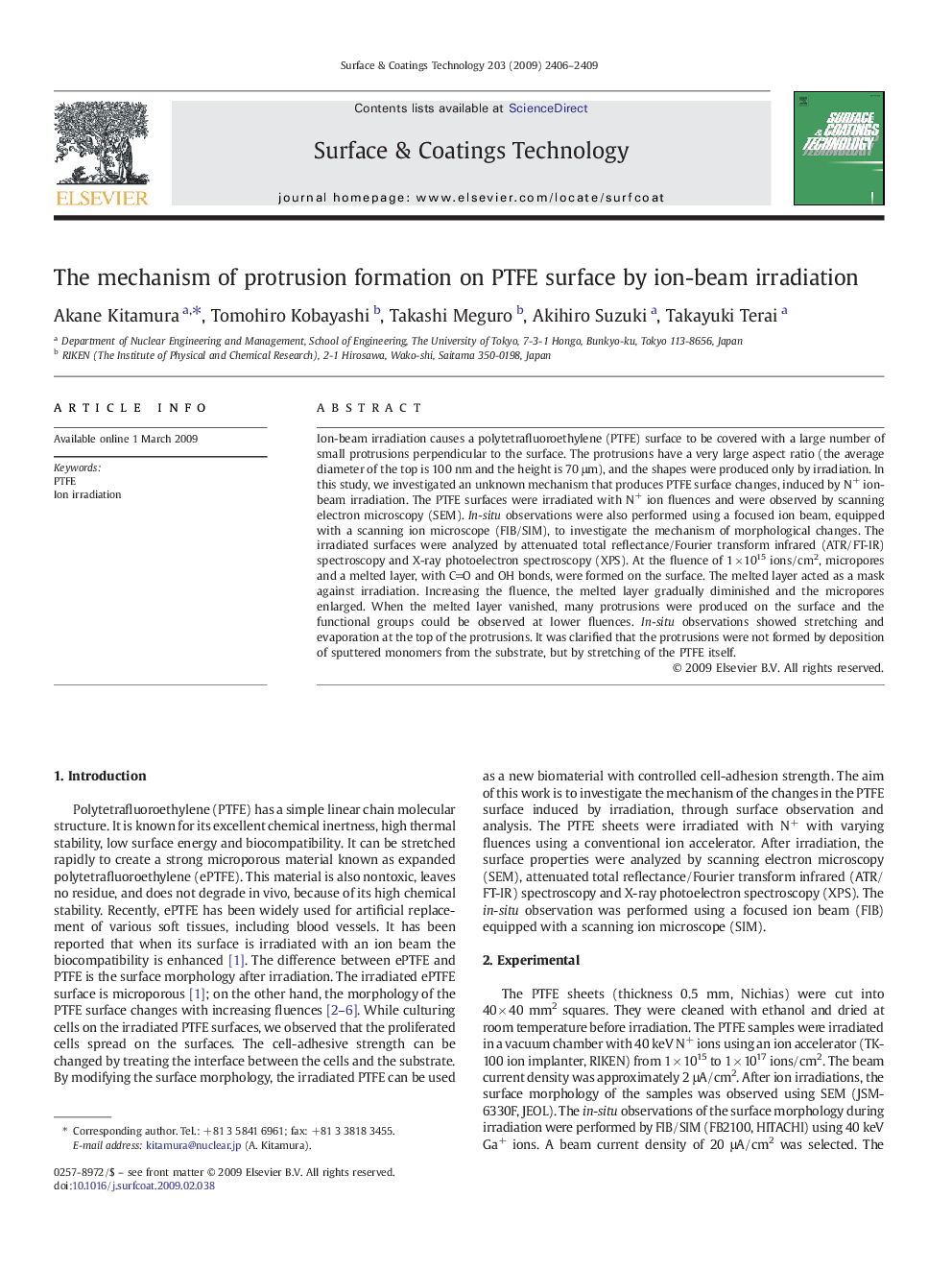| Article ID | Journal | Published Year | Pages | File Type |
|---|---|---|---|---|
| 1660142 | Surface and Coatings Technology | 2009 | 4 Pages |
Ion-beam irradiation causes a polytetrafluoroethylene (PTFE) surface to be covered with a large number of small protrusions perpendicular to the surface. The protrusions have a very large aspect ratio (the average diameter of the top is 100 nm and the height is 70 μm), and the shapes were produced only by irradiation. In this study, we investigated an unknown mechanism that produces PTFE surface changes, induced by N+ ion-beam irradiation. The PTFE surfaces were irradiated with N+ ion fluences and were observed by scanning electron microscopy (SEM). In-situ observations were also performed using a focused ion beam, equipped with a scanning ion microscope (FIB/SIM), to investigate the mechanism of morphological changes. The irradiated surfaces were analyzed by attenuated total reflectance/Fourier transform infrared (ATR/FT-IR) spectroscopy and X-ray photoelectron spectroscopy (XPS). At the fluence of 1 × 1015 ions/cm2, micropores and a melted layer, with CO and OH bonds, were formed on the surface. The melted layer acted as a mask against irradiation. Increasing the fluence, the melted layer gradually diminished and the micropores enlarged. When the melted layer vanished, many protrusions were produced on the surface and the functional groups could be observed at lower fluences. In-situ observations showed stretching and evaporation at the top of the protrusions. It was clarified that the protrusions were not formed by deposition of sputtered monomers from the substrate, but by stretching of the PTFE itself.
